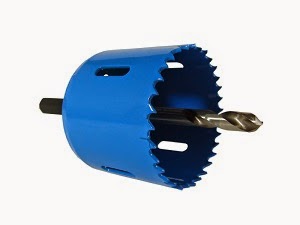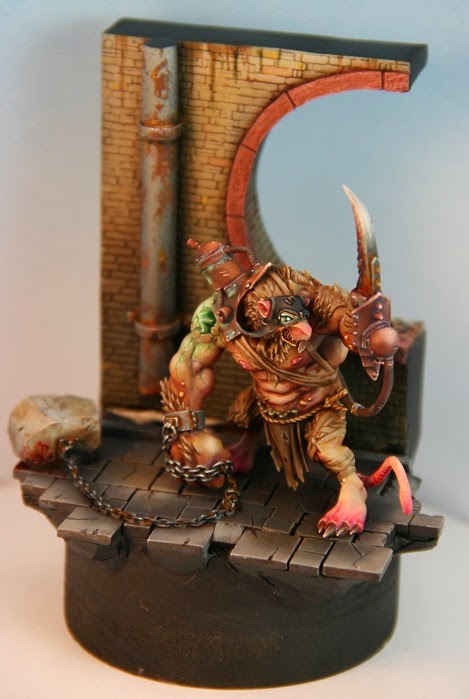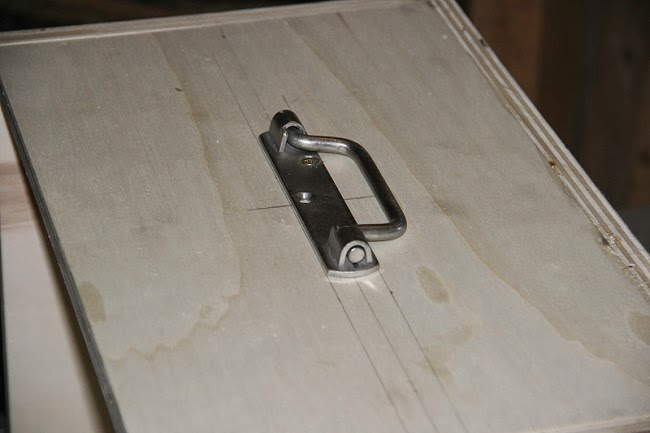A long overdue article this time aimed at the use of oil
paints in your miniature projects.
From where I stand there are two main
subcategories in the oil painting domain. The first is the use of oil paints on
the whole piece you are working on instead of acrylics, this invoves wet-in-wet
blending (more like sticky in sticky but the principle is the same) and can
allow apparently for extremely smooth suface blends and effects.
Sadly I have not yet experimented this so I will deal with
the second subcategory: oil washes on acrylic paint bases. This approach allows
a very easy softening of transitions as well as permitting the creation of some
quite glorious and surprising effects on your pieces. It is in my view an
excellent selection of techniques to take your pieces to the next level, or
even to speed up and enhance you tabletop pieces. Yet because I have been
reading a lot of Fantasy novels recently I feel the urge to write this article
with a little flair of the Fantastic, I hope the style will not deter you from
the information therein contained. Read on...
The "Oilspell" you say? I have indeed heard of such a thing, young - uhm - person I not only heard of it: it was also taught to me in my younger days. Now your question is how do we perform this sorcery? Well you seem full of hope and, I might venture, even promise in your Craft. First however, my little
apprentice, before divulging the rudiments of this particular magic I will test your resolve by sending you on a quest. You will travel to the far ends of your art store and procure
yourself with the following arcana:
- a selection of bristly magic wands (paintbrushes) that you
will devote exclusively to the mastery of the Force of Oil (I like to have
basically the same sizes as those I use for acrylics: so a 0 and 1, and a
useful add on can be a flat headed brush in size 1 also)
- The Force of Oil is contained in small metallic flasks
called “tubes”, you will acquire all shades that you desire in relatively small
quantities. This magic is far more demanding than the Acrylic that other sorcerers adhere exclusively to: therefore be prepared to expend considerably
more gold coins than you have hitherto been accustomed to. Rest assured that
your efforts will not be in vain. Among your selection I recommend that you
acquire Black, Burnt Umber, and a deep blue of your choosing as these
particular manifestations of the Force of Oil will always be of use to you in
the future. The particular manufacturer of these “tubes” is not so important
although the Wizards of Winsor & Newton have an excellent quality level.
- to tame the Force of Oil – which is highly concentrated
and unruly in its primal “ tube” form – you will require the potion known as “Spirit of the Whyte” (white spirit, or any other oil solvent that the art dwarf attempts to sell you. This
magic may cause nauseating fumes so if it is offered to you then purchase an odourless
spirit) You will also require a means of storing this spirit in small quantities, small glass
bottles with corks are ideal and seriously if you are a wizard you should have
these coming out of your unmentionable areas.
- an aluminium crucible or “palette” will be useful to introduce the raw force of “tube
Oil” to the taming power of the “White Spirit”. For your own comfort it is important to keep distinctly separate the crucibles in which you prepre your Acrylic Spells and those in which you will prepare the "Oilspell".
Next there awaits for you a terrifying journey into the
heathen lands of “make-up stores”. These caverns of pigmentatious torture can
be easily identified by the horrid sickly sweet aroma that emanates from the “scents
sections” of its' bowels, and by the quantity of gaggling high-pitch voiced aesthetical
horrors that spew hither and thither from the caverns opening. Do not be
daunted: the surprise of your appearance will protect you sufficiently from the
“salespeople” who shamelessly attempt to convert innocents to the havoc of
daily pigmented facial reconstruction, but be warned: DO NOT DALLY, and DO NOT
let curiosity drag you towards the "scent section" or you will be forever lost!
In this hellhole you will speedily find and purchase small make up pad-brushes
in sufficient quantity so as to never need to return to this place. Now
RUUUUUUUUUUUUN!
Back in the safety of your laboratory you will prepare the “Tube
Oil” by squeezing a small quantity of your chosen spell onto some suitably
absorbent paper (such as the witch of the houses' sacred “Scroll of the Cook”)
and leave it for a few minutes so as to remove the surplus raw Oil. While this
is happening it may be advisable to don appropriate protective equipment such
as breathing apparatus to protect your brain cells from the solvent and eye
protection if you are a particularly messy potion mixer.
| The "Raw Oil" made ready on a sheet of "Scroll of the Cook" |
| Maybe tea should be preferred over whisky, but protection should never be debated about. |
Now young apprentice a few words of warning for when making use of
this powerful force:
1) NEVER lick your wand! Not only does this sorcery taste awful, it is also bad for your physical integrity. If you have taken my advice and donned your breathing apparatus this will help fight against habits derived from your Acrylic powers. To keep your wand nice and pointy you will reform its tip using the "Scroll of the Cook" (kitchen roll) and roll your wand upon its soothing surface.
2) Keep your stock of raw Oil far in front of you so as not
to stick any body parts in it. It is not particularly dangerous to your skin,
but it is hellish to wash off and you will end up putting weird shades of
magical pigment everywhere without noticing. If you possess a feline familiar
be prepared to follow it around the laboratory with a bottle of “Spirit of the Whyte” and much "Scroll of the Cook" to clean up its paw prints.
3) Before casting the “Oilspell” it is necessary to protect
your Acrylic work by invoking a layer of Matt or Satin varnish. This invocation
will be best performed using the high tech’ “Wand of Air” (or airbrush to the
layman). Once this has been successfully applied and the invocation has dried
you may attempt to cast the “Oilspell” which will now be divulged to you.
Using your wand (or a toothpick) transfer the raw Oil of your choice to the crucible, there add the “Spirit of the Whyte” so as to create a vibrant liquid of a consistency close to that of cooking oil. Using your wand you will then apply this potion to the areas you desire.
| All the reds, purples, blues, and the shiny green gloss on the shirt are "Oilspells" in progress. Here the spell has just been cast and its' effects are still to be refined. |
It is not necessary to be particularly
careful during the application as the spell lasts for much longer than the Magic
of Acrylic. You may apply potions of various colours everywhere you deem
appropriate. It is also possible to mix two potions upon the same area of your
Artefact to create weird and wonderful colour transitions. Should you wish to
remove or decrease the effect of your potion in any particular area you need
only use a clean wand and a bit of “Spirit of the Whyte” to mop up the desired mount
of potion from the specific area. Equally your wand may be used to mix your spells upon the surface of your artefact to offer you a wider range to your magic.
Once you have applied your potion(s) it will be necessary to let the potion start to evaporate in part, this is the perfect time to replenish your mental resolve with the well known wizardly cure of “Tea” (or whisky depending on the age of the wizard). After approximately fifteen minutes it is time to make use of the arcana bravely acquired from the “make-up-store”.
Using one of these “make up pads” lightly soaked in “Spirit of the Whyte” simply lightly pass over all the areas upon which you cast the "Oilspell" until you reach the desired level of smoothness. In your apprenticeship of this powerful magic you will no doubt find that it is necessary to perform several invocations until the result satisfies you: but remain patient and mastery will follow.
| No amount of makeup would save this guys looks... |
To seal the powerful invocations you have performed take hold once more of the “Wand of air” and cast a veil of Matt or Satin varnish. Do this at least two hours after having cast your last “Oilspell” or you will seal in impurities of a viscous nature that will slowly corrupt your spells and destroy your Artefact.
Well young wizard, you have now the potential to master the "Oilspell" and apply it to your various Artefacts. I wish you well in your endeavours. When you return, I might just reveal to you the spell of the "Rainbow Dust"... Now go and buy an old Sourcerer another single malt: your artefacts are not the only ones in need of liquidized enhancements! I will leave you with a visual of what happened to the last Artefact upon which I cast my "Oilspell". Now ge'me a dram!
| The Artefact after having cast the basic Acrylic spells... |
| And the same after having completed the invocations of the "Oilspell" |
The model used in this article is "Pt. Ryan", the Studios' second bust product. A small quantity of casts are currently available, if interested then please write to the Studio: tinypeoplestudio@gmail.com
Now go and work some magic!
(And I'm still waiting on that dram...)





















































